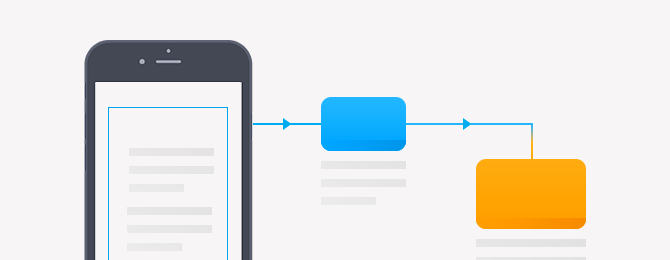Where and How is OCR Used
Optical Character Recognition (OCR) technology is a mature technology with widespread business use. Essentially, it enables users to extract text from an image so it can be manipulated in a word processor or database. In other words, it transforms a difficult-to-use image into meaningful content. So, what are some of the more prevalent uses of OCR?
OCR in Business
In business, there are numerous potential applications.
Document and Form Recognition
Extracting information from a printed document or form arguably provides the most significant benefit from OCR. Let’s consider a hypothetical scenario: you need to renew a vehicle registration with your state government. The required form likely contains a wealth of useful information such as:
- Name
- Address
- Vehicle identification number
- Vehicle make, model, and year
- Whether you’re an organ donor or not
- Etc.
With proper collaboration using OCR and databases, this single form can enable smog check verifications in California to be automatically assigned to a vehicle, notify organ donation charities that you’re a donor, and so on.

This type of collaborative efficiency can be applicable in various business scenarios. For example:
- HR can capture applicant information easily and populate their databases to save for existing or future openings.
- A mortgage provider can digitize all loan paperwork and collaborate to process it with related service providers, such as an escrow company, insurance companies, and more.
Import Business Cards
The exchange of business cards is a long-standing business tradition. However, people no longer catalogue business cards. OCR software lets you snap a picture to automatically populate business card information into your contact database.
Widely Used in Banking
Today’s banking apps allow you to snap a picture of a check, and OCR typically converts the check’s content into data. This auto-population of deposit amount, date, payee, etc. into the bank’s database enables prompt processing. ATMs today also utilize the same functionality.
Healthcare
Many industries continue to heavily rely on paperwork, with healthcare being one of them. As more healthcare organizations adopt the electronic health record (EHR), OCR plays a critical role. It deals with:
- Insurance forms
- ID cards
- Privacy statements
- Doctor’s notes
- Various other information in each patient’s individual record
For a complete guide on how OCR and barcode technology can empower the healthcare industry, please check out our free ebook - A Deep Dive into the Enabling Technologies in Electronic Health Records. Using OCR to extract such information from documents and forms also enables greater efficiencies. For example, a written prescription can be sent over to a pharmacy via an app that reads the prescription using OCR, saving time for both the patient and the pharmacy.
Accounts Payable
Manually entering receipts from an employee’s expense report can be a time-consuming task for any organization’s accounting department. The same holds true for any paper or PDF invoices they receive. OCR can add immense efficiencies for such tasks, significantly reducing processing time.
Meeting Notes
Suppose you’re at a lecture, perhaps in a classroom or trade show, where the presenter is jotting down notes on a whiteboard. Instead of copying what is written word-for-word, you can simply snap a picture. If you missed a meeting and your colleague took written notes, you can photograph the notes. Instantly, in either scenario, with OCR, you can transcribe the notes for use in a word processor. OCR-based apps for these scenarios are also quite adept at recognizing some cursive writing.
OCR in Consumer Use
There are also increasing consumer use scenarios for OCR.
OCR in Travel
Next time you’re traveling abroad, consider using a translation app such as Google Translate, TripLingo, or Microsoft Translator. Some of these apps let you snap a picture of street signage or a menu and translate it for you, with OCR playing a key role in this process.
OCR in Broadcasting
OCR technology is even used in broadcast television, as noted in SportTechie.
We can find patterns in the images themselves. We can figure out ‘OK, so that’s Tiger Woods in 1997.’ We can figure that out, go through all of the footage, and find all of the clips. We can look at the broadcast transcript and use that to correlate the video clips with the time codes. We can do optical character recognition on the video so when the broadcaster put up the onscreen graphics we could actually go back and read those and interpret them as text. And that can go back as far as we want, depending on how high-quality the footage itself is.
OCR in Receipts
While many businesses have digitized the process of receipts in sales transactions, there are still some instances where you will receive a printed receipt. You can digitize these receipts to better preserve them as records. Sometimes, you may need to submit receipts to employers as part of an expense report. If you use OCR, you can easily recall old receipts, whether it’s for claiming a warranty on an item you purchased or for tax season. The potential uses for OCR are many. Businesses have benefited for some time, and now many more consumers are too. Have you experienced any of the above OCR uses? Have you experienced any other OCR uses not mentioned here that you found helpful? How to get the best OCR scanning accuracy? Share with us below or you can contact us.



 Blog
Blog

